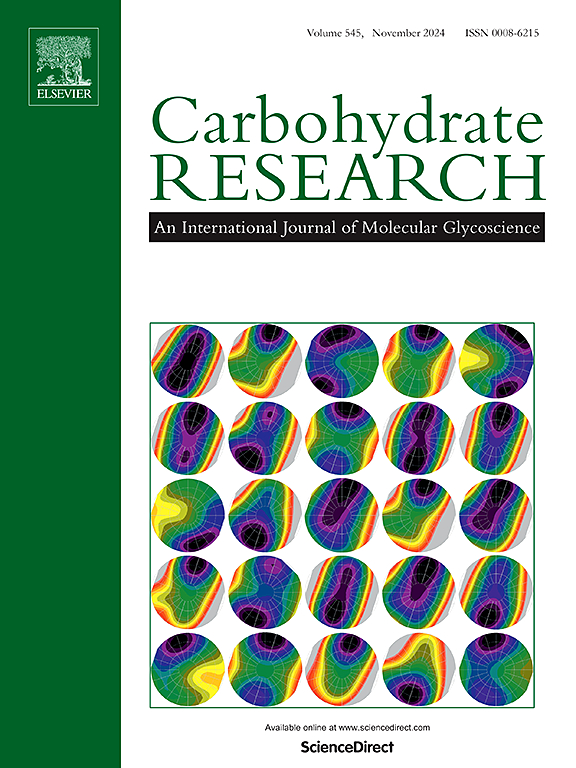Synthesis of a di-O-acylated deoxynojirimycin (DNJ) derivative and evaluation of its antibacterial and antibiofilm activity against Staphylococcus aureus and Stenotrophomonas maltophilia
IF 2.4
3区 化学
Q3 BIOCHEMISTRY & MOLECULAR BIOLOGY
引用次数: 0
Abstract
Herein we report the synthesis of a novel di-O-acylated DNJ derivative, conceived to study whether iminosugar derivatization with a lipophilic acyl moiety could positively affect its antibacterial properties. The well-known PS-TPP/I2/ImH activating system was used to readily install the acyl chains on the iminosugar, leading to the desired compound in high yield. Biological assays revealed that a di-O-lauroyl DNJ derivative enhanced the antibacterial effect of gentamicin and amikacin against S. aureus and S. maltophilia strains, respectively, suggesting a potential role as antibiotic adjuvant. Furthermore, even though this compound displayed only a weak concentration-dependent inhibitory effect on biofilm formation in S. aureus, it was able to significantly reduce the viability of S. aureus and S. maltophilia preformed biofilms. The results confirm the antibacterial potential of piperidine iminosugars and open the way to further studies involving novel lipophilic derivatives to optimize the antibacterial adjuvant effect herein observed for iminosugar 12.

求助全文
约1分钟内获得全文
求助全文
来源期刊

Carbohydrate Research
化学-生化与分子生物学
CiteScore
5.00
自引率
3.20%
发文量
183
审稿时长
3.6 weeks
期刊介绍:
Carbohydrate Research publishes reports of original research in the following areas of carbohydrate science: action of enzymes, analytical chemistry, biochemistry (biosynthesis, degradation, structural and functional biochemistry, conformation, molecular recognition, enzyme mechanisms, carbohydrate-processing enzymes, including glycosidases and glycosyltransferases), chemical synthesis, isolation of natural products, physicochemical studies, reactions and their mechanisms, the study of structures and stereochemistry, and technological aspects.
Papers on polysaccharides should have a "molecular" component; that is a paper on new or modified polysaccharides should include structural information and characterization in addition to the usual studies of rheological properties and the like. A paper on a new, naturally occurring polysaccharide should include structural information, defining monosaccharide components and linkage sequence.
Papers devoted wholly or partly to X-ray crystallographic studies, or to computational aspects (molecular mechanics or molecular orbital calculations, simulations via molecular dynamics), will be considered if they meet certain criteria. For computational papers the requirements are that the methods used be specified in sufficient detail to permit replication of the results, and that the conclusions be shown to have relevance to experimental observations - the authors'' own data or data from the literature. Specific directions for the presentation of X-ray data are given below under Results and "discussion".
 求助内容:
求助内容: 应助结果提醒方式:
应助结果提醒方式:


